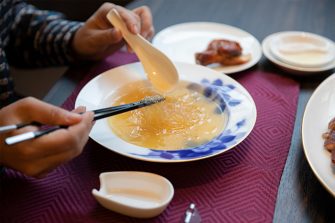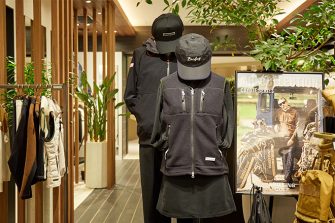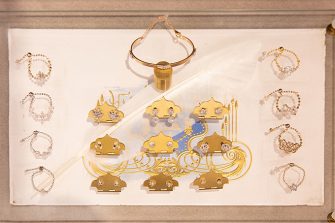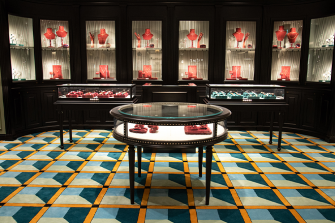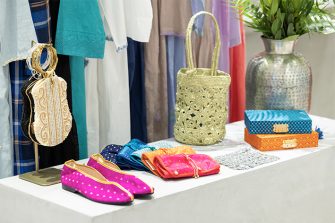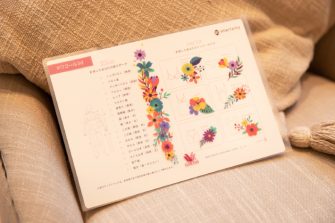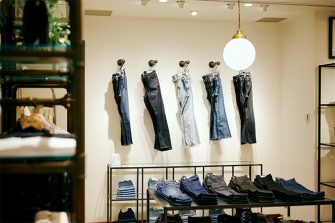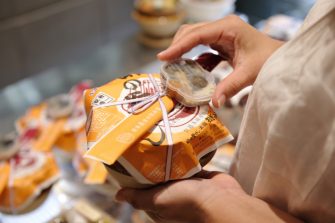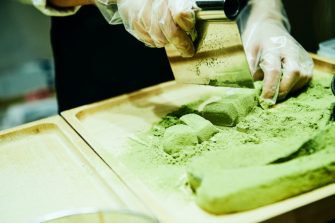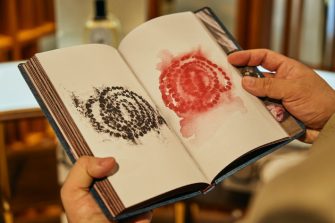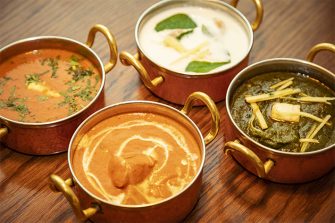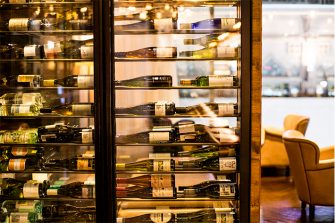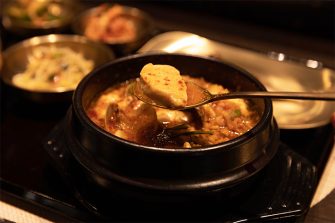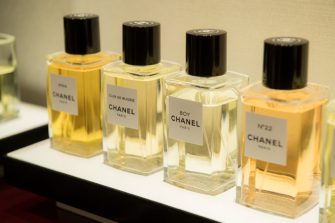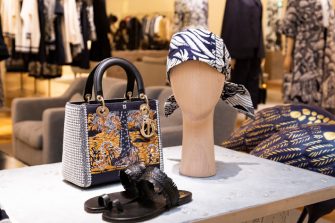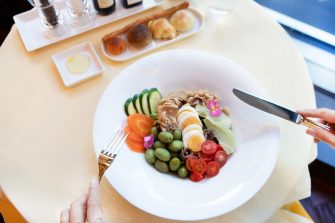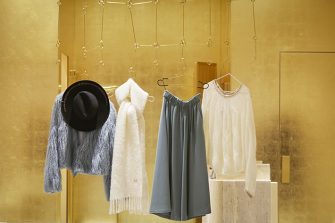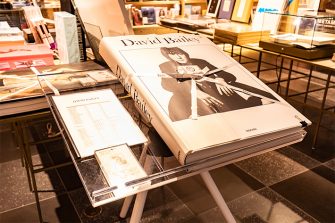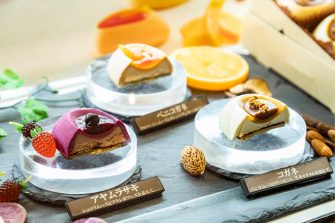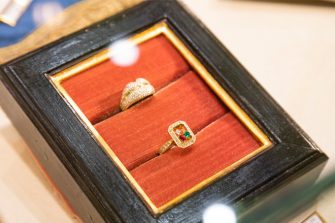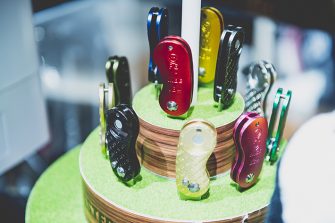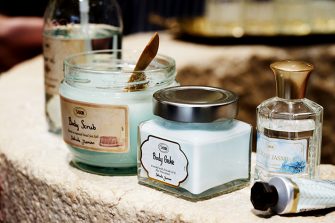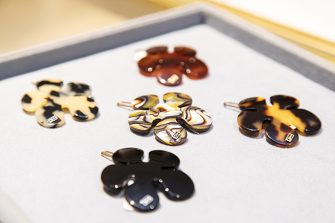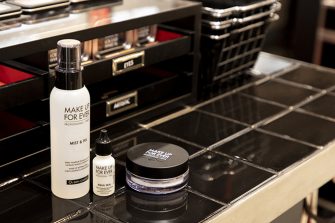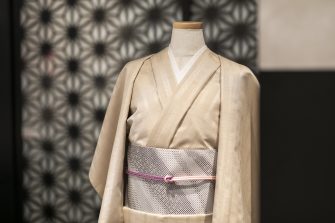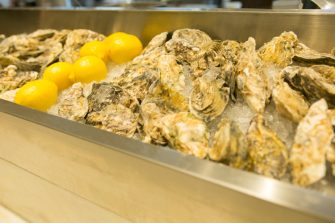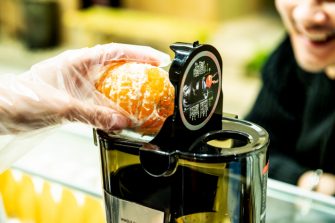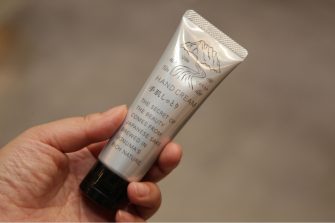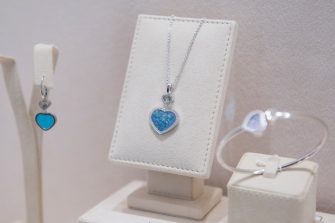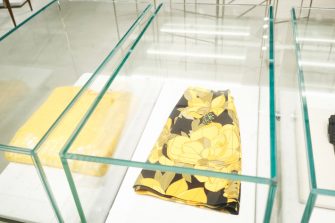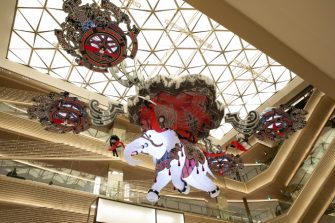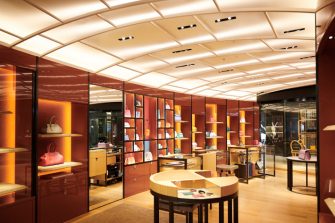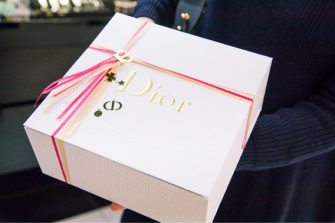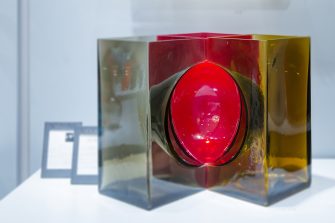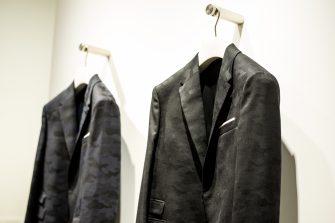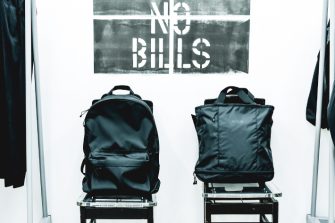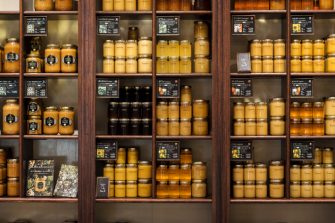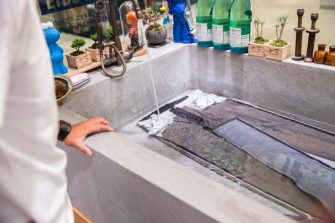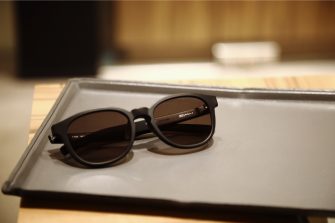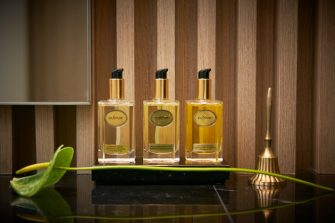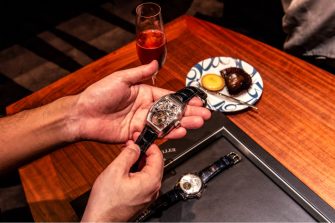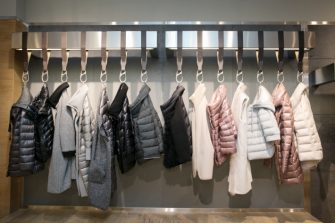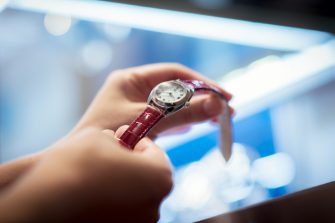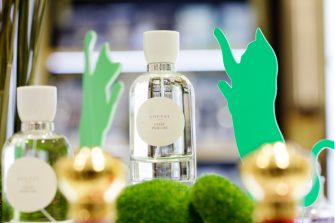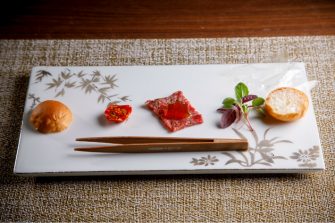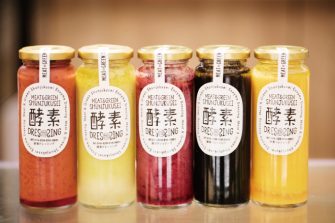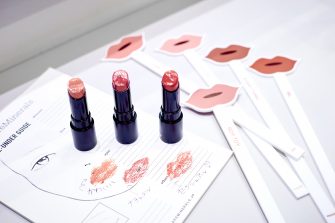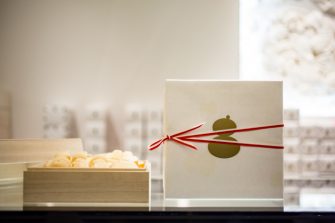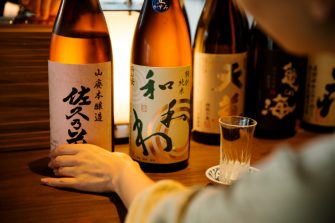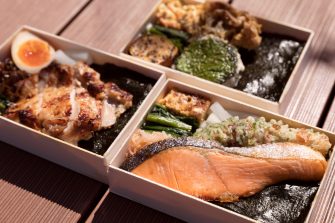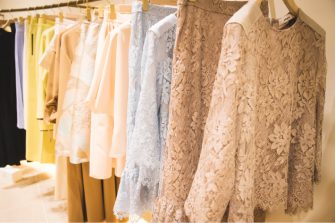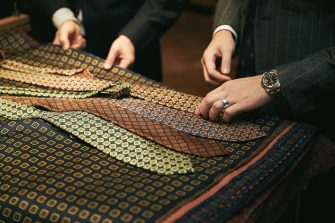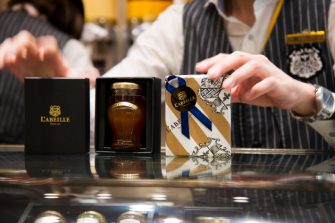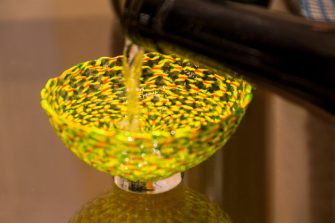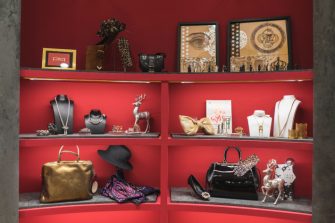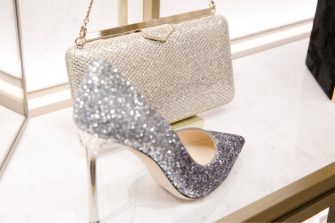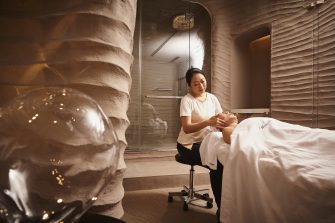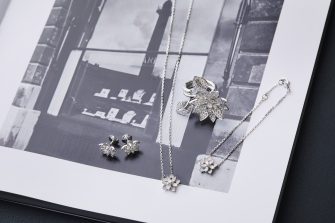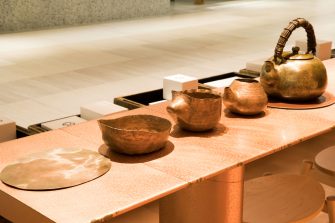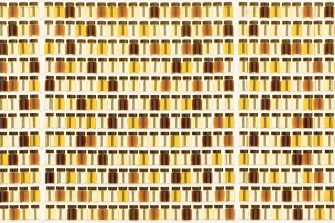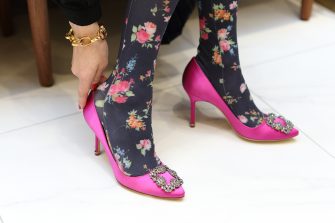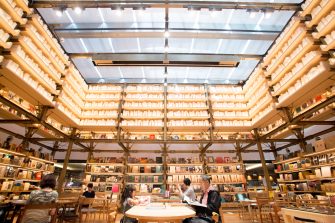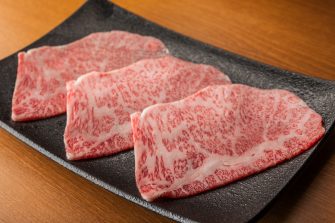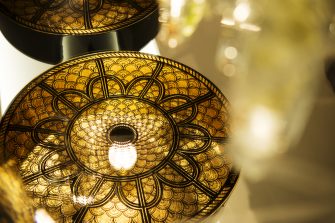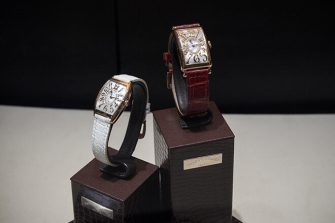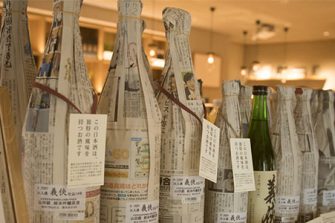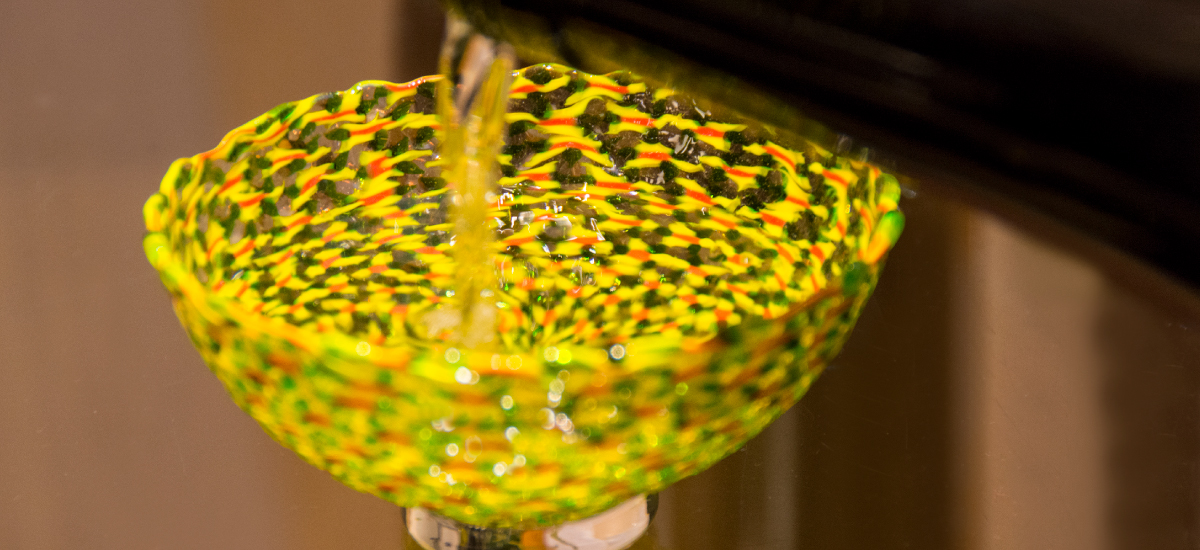

GINZA SIX EDITORS
时尚、珠宝&手表、生活方式、美容、食品…
精通各种类型的个性丰富的编辑们,在GINZA SIX上闲逛
记述走路发现的乐趣。
GINZA SIX梯酒 Barhopping at GINZA SIX
马凯尔牧元
GINZA SIX EDITORS Vol.23(Food)
“这个有梯子的价值。”第一次访问GINZA SIX的时候,闪闪发光。
立刻制定了计划,邀请了贪吃的伙伴亮介和绘里子、诗织。不是银布拉,而是“银ハシゴ”。“看起来很有趣”,三个人乘坐了计划,但是在GINZA SIX面前,有点厌烦了。
“那么,今天的预算是1万日元。所以,大家各付1万日元。由我来管理。”到底仅仅这样,能喝到什么程度呢? 是GINZA SIX。
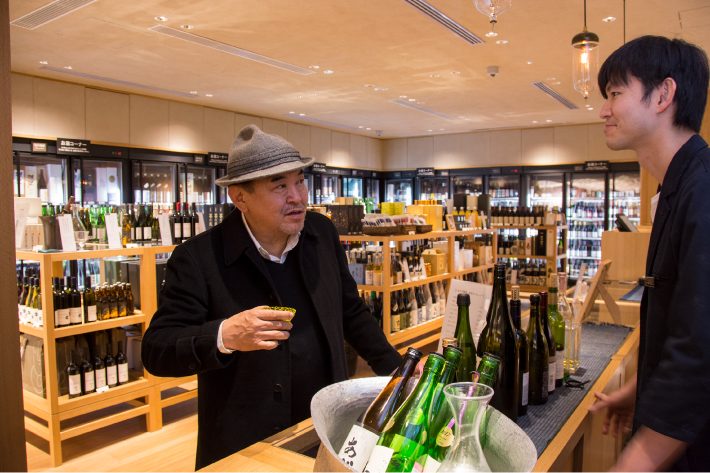
首先带去的是地下2层。在酒店“现在吧”一画里的站着酒柜台,准备了几种日本酒和葡萄酒,每天可以喝400~500日元。
“在这里试着叫饭前酒吧”。一边听店长的说明一边选择,但是评论很好。准确且易懂,都想喝。按照推荐选择的是我“山形正宗”纯米吟酿的斗瓶周围,亮介是《飞露喜》中的纯米大吟酿,绘里子是“丹波葡萄酒”Sovining。诗织是名为“菲尔米埃的施瓦什瓦”的香槟酒。
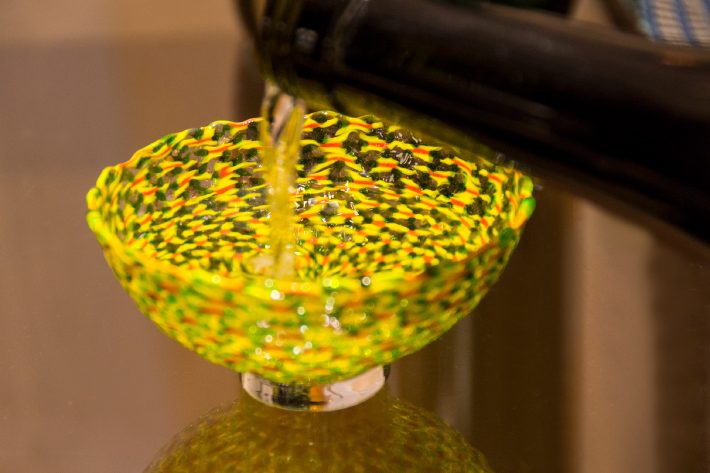
“山形正宗”虽然有漂亮的碎片,但却有膨胀。“飞露喜”的吟酿香不执拗,“丹波葡萄酒”有贴近和食的东西。“菲尔米埃的施瓦修瓦”味道的温柔渗透到身体里。边转边喝边喝边喝边,边聊着“好的还有一家”。
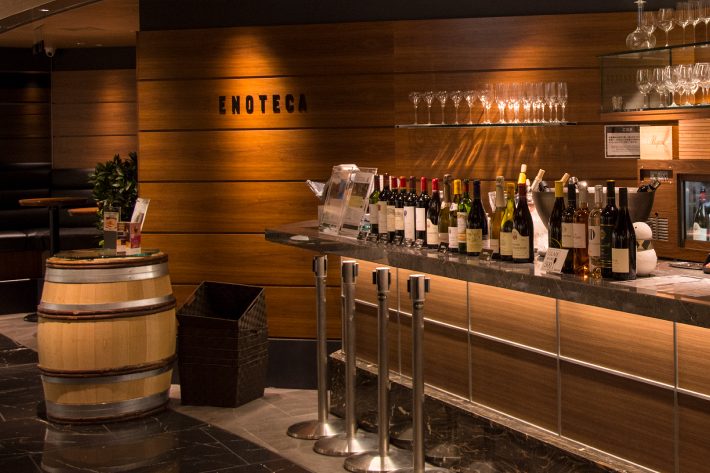
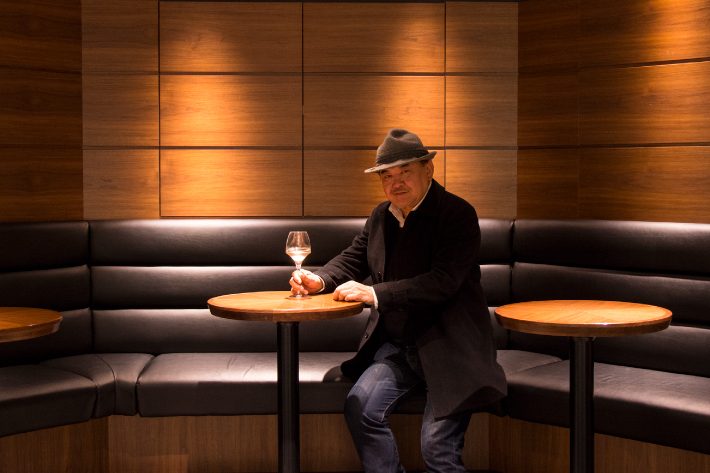
这次是“葡萄酒店Enoteka”。这是一个命名为“银玫瑰”而注入力量的罗泽葡萄酒,一杯500日元就能喝到。白桃和荔枝等香味的清爽辣椒能勾起食欲。好了,战斗终于开始了。这次我们将前往六楼“银座大食堂”。
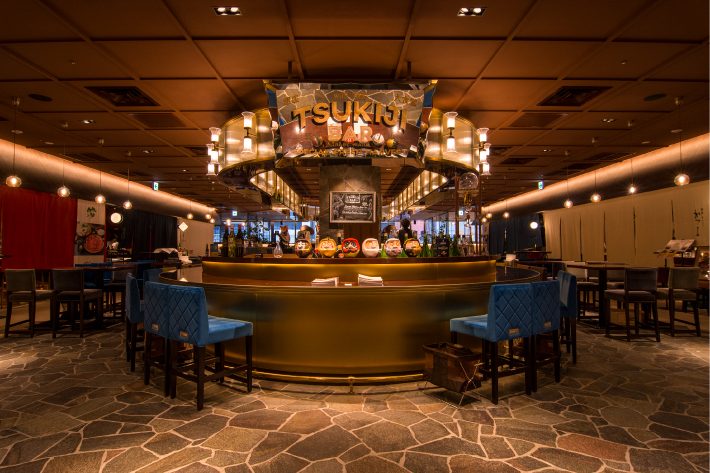

从排成一排的各种类型的餐厅,取自己喜欢的料理,企图举办宴会。座位选择了俯视中央路的阳台座位。眼下一边俯视银座的街道一边吃饭,感觉就像战胜了大银座一样。
首先选择前菜的是从山田力量监修的BARU选择的BARU中选出的“SEBE切经典(¥1700)”(以下全部不含税价格)和“云丹和汤汁的法郎(¥800)”,“金枪鱼粘稠的鳄梨Es彪马(¥500)”。
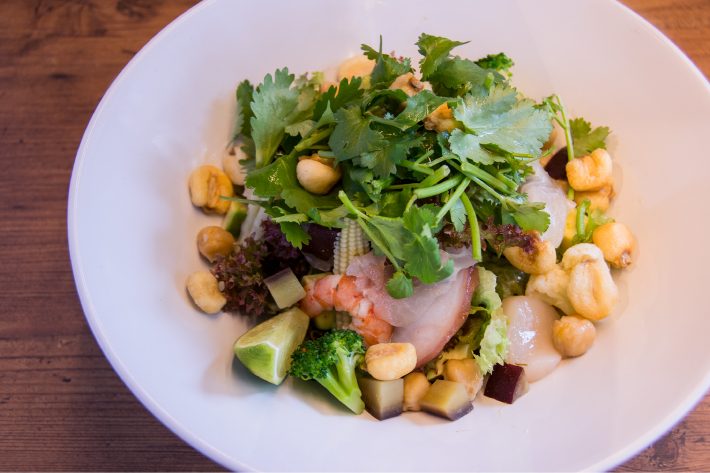
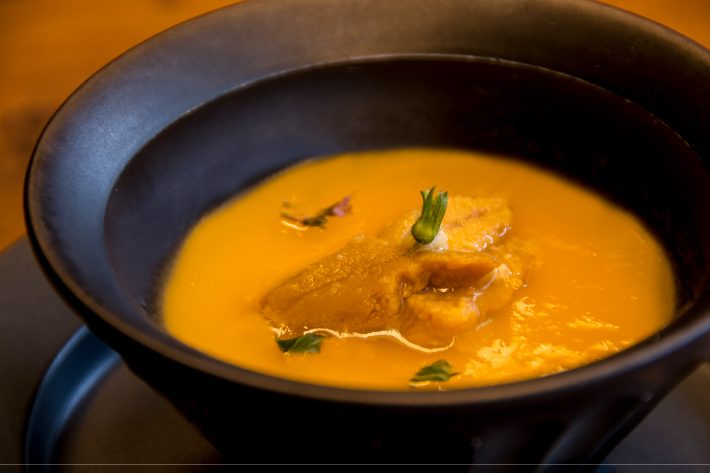

寿司店推出的“京豆腐七味佐料(¥600)”。

中国餐馆试着说“蒸鸡和北京鸭棒棒鸡(¥950)”、“四川风麻婆冷奴(¥680)”。
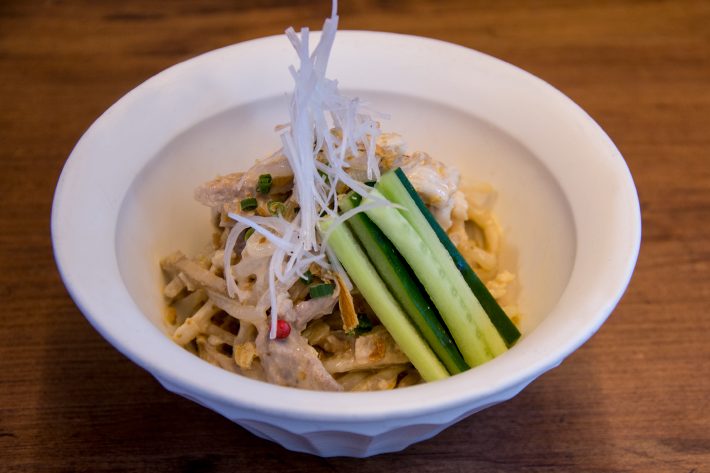

另一方面,为了应对任何情况,请在白葡萄酒上加入日本酒、麦烧酒,是万无一失的。
菜一个接一个地送来了。哈哈。好开心啊。塞比切把注入下面的腌渍液的通称“虎之牛奶”充分搅拌在各个鱼贝类中,酸味和辣味会刺激食欲。弗兰的海胆和鸡蛋的甜味相结合的美味品质优良,使宴会的开始变得光滑。这些都是白葡萄酒啊。
金枪鱼是第一次看到金枪鱼的样子,鳄梨的香味和肥金枪鱼的脂肪的香味,章鱼的口感一个接一个地通过口中,真的很开心。这个和泡汤稍微有点辣味的京豆腐就是日本酒啊。
棒棒鸡加入北京鸭,有着与通常情况不同的咀嚼,麻婆冷奴竟然是冷的麻婆豆腐。但是,虽然很冷,但是不油腻,辣味和花椒的香味很好地站着,一边踢舌头一边挠鼻孔和胃袋。好啊,这些用麦烧酒来迎战吧。
早就只吃了6盘。下一个是温热的盘子。“黑醋和葡萄酒的黑芝麻醋肉(¥1480)”、“黑毛和牛里脊海带〆烤(¥1800)”、“河豚炸(¥1800)”、“河豚炸(¥1800)”,还有“汤汁卷和火腿三明治&香肠板块(¥1800)”。
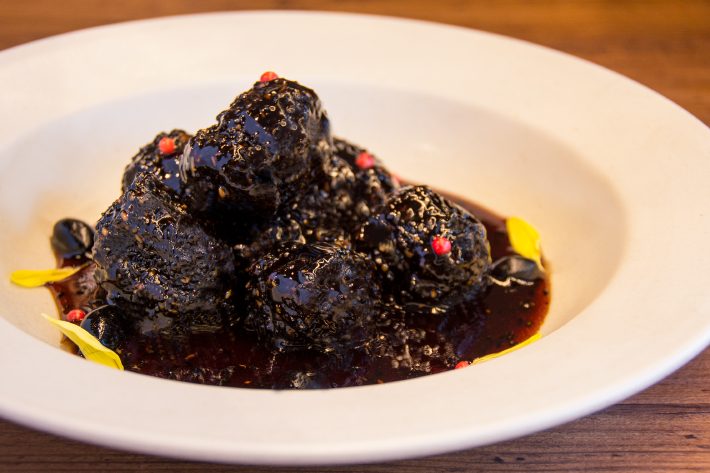
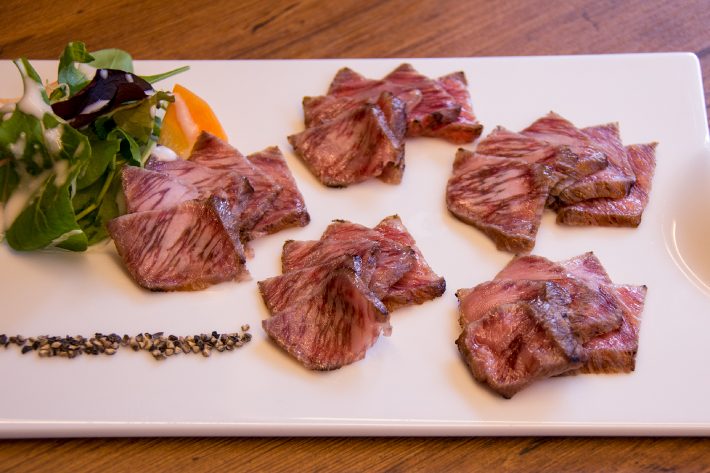
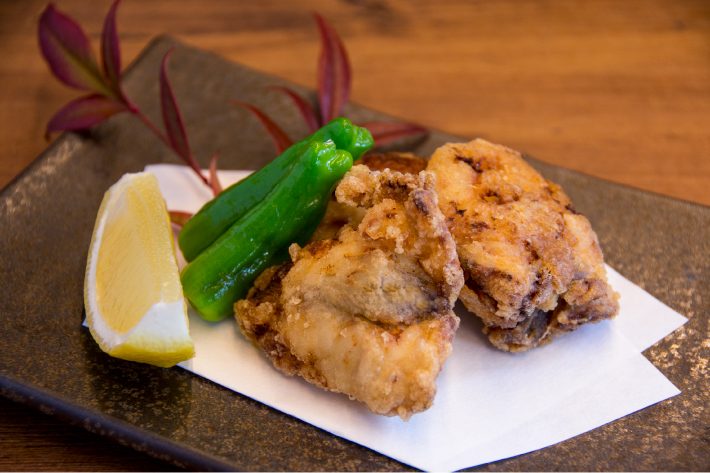
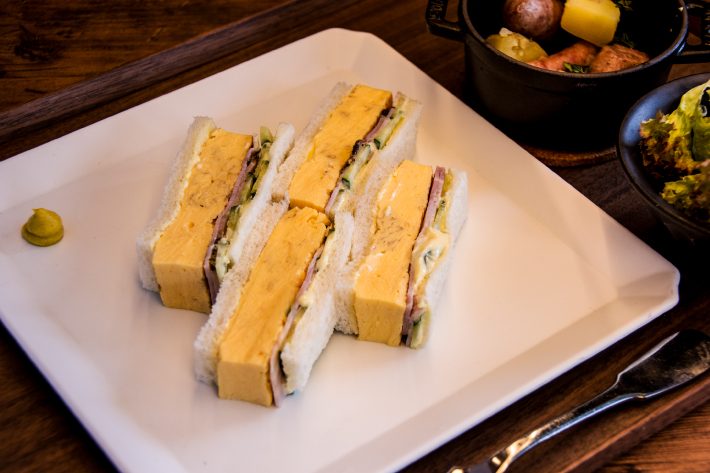
在这里也点了红葡萄酒,试着配合醋肉和和牛里脊肉。糖醋肉在黑醋的浓郁中加入了葡萄酒果味的香味,红葡萄酒前进。和牛里脊肉脂肪的香味很甜,白葡萄酒也可以吗?三明治往后推,用配上香肠喝麦烧酒。这样运来的料理,和各种各样的酒一起,一边确认合得来吃,不是很开心吗?
河豚唐扬,如果在香喷喷的衣服上立牙,就能弹出充满美味的身体,但是有问题。有三片。这是猜拳。猜拳决定顺序,决定名次。第四位的人不能吃河豚。但是,在拜托蚬贝的拼盘上,首先要选择哪一个的权利。
不仅要点各种各样的料理,这样的游戏也不错。差不多该怎么办了。刚才,我点了汤汁美味的煎鸡蛋,让我不由得露出了脸,除了汤汁火腿三明治之外,还点了12根的饭团和鱼翅面。关系很好地分享着歌。对了对了,放在鱼翅面上的白木耳,对美容很有效,所以给女性送去吧。
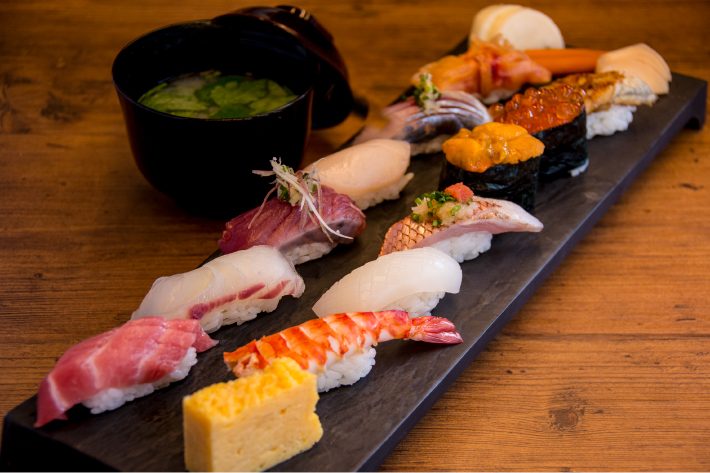
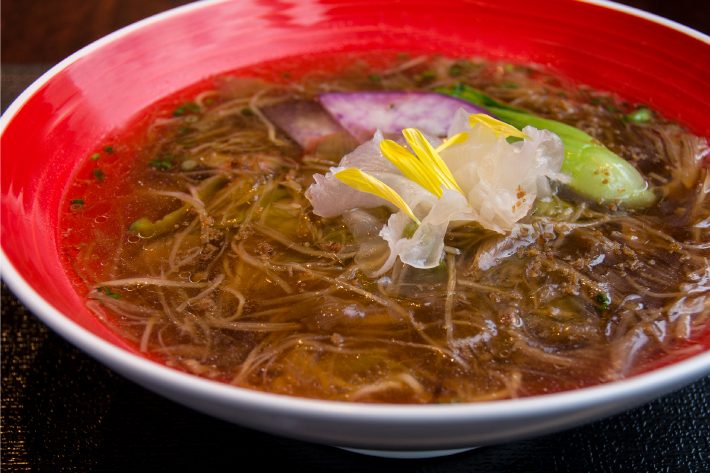
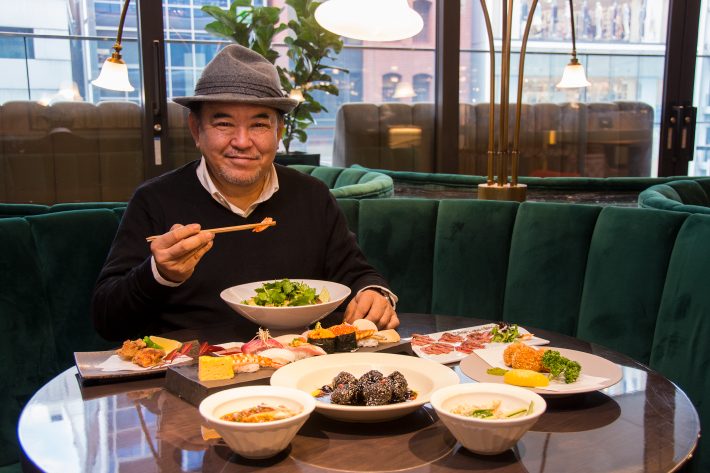
这样的请求,饱腹、醉酒,压制大银座,每人一万日元就能找钱。这可能是癖好,但还没结束。甜点。
再次回到地下2层,以“PHILIPPE CONTICINI”为目标。这是在柜台制作的甜品酒吧里制作的原创巴菲来装饰善始善终之美的算术。选择的是由巴布、草莓、皮斯塔蒂奥奶油和巧克力等18种组合而成的“维利努帕菲”(\2,000)。
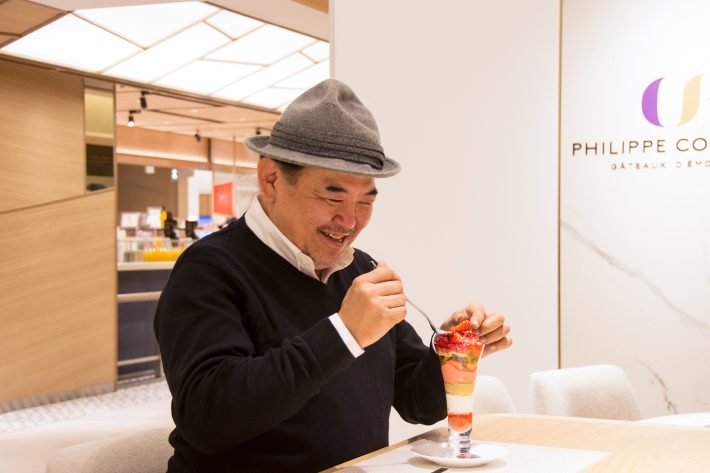
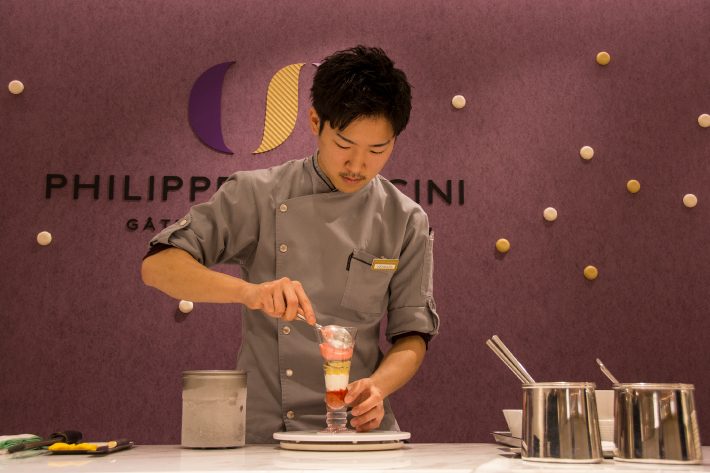
许多香味、酸味、不同的甜味和口感巧妙地产生共鸣。不,不仅如此。
有从乐曲到高潮,再到柯达的乐曲一样的电视剧。与从食前酒开始的今晚的“银扎西克斯梯酒”重叠在一起,喝醉在巴菲送来的梦幻时光中。其他3个人也边吃边无言,享受夜晚的片刻。
好,这次假日试着做午饭的酒吧。
Text:Macky Makimoto Photos:Takashi Kaizuka Edit:Yuka Okada
Barhopping here would be something—that’s what occurred to me the first time I visited GINZA SIX.
So, I quickly drew up a plan and invited fellow food-and-drink lovers Ryosuke, Eriko, and Shiori. Ginza barhopping without strolling the Ginza streets… sounds like fun, they said, and agreed to join in. Some confusion, however, ensued in front of GINZA SIX.
“OK, everyone. We’re doing this today on a budget of 10,000 yen for each of us. You are giving me 10,000 yen, and I’ll keep track of everything.” How in the world can you barhop on a budget like that in Ginza? At GINZA SIX, of course.

I take them to the second belowground floor, to a stand-and-drink bar in one corner of Imadeya, a liquor store, where you can try several varieties of sake and wine, all starting at 400 or 500 yen a glass (all prices given are before tax).
“Let’s go with an aperitif.” You choose based on what the store manager happens to say. His remarks turn out to be really intriguing. They’re clear, easy to understand, and make you want to try what he’s talking about. Based on the recommendations, I go with the Yamagata Masamune Junmai Ginjo (ginjo sake with no added alcohol) by tobin kakoi (naturally filtered in a large glass flask). Ryosuke has the Hiroki Junmai Daiginjo (daiginjo sake with no added alcohol), while Eriko has a glass of sauvignon from Tamba Wine. Shiori opts for a sparkling wine called Fermier no Shuwa-Shuwa.

The Yamagata Masamune has a distinct but mellow flavor. The Hiroki offers up subdued ginjo aromas. The Tamba Wine matches well with Japanese food. The gentle flavor of the Fermier no Shuwa-Shuwa seeps into one’s body. Things begin to get lively as we take turns drinking. Ultimately, I give the signal to head to the next place.
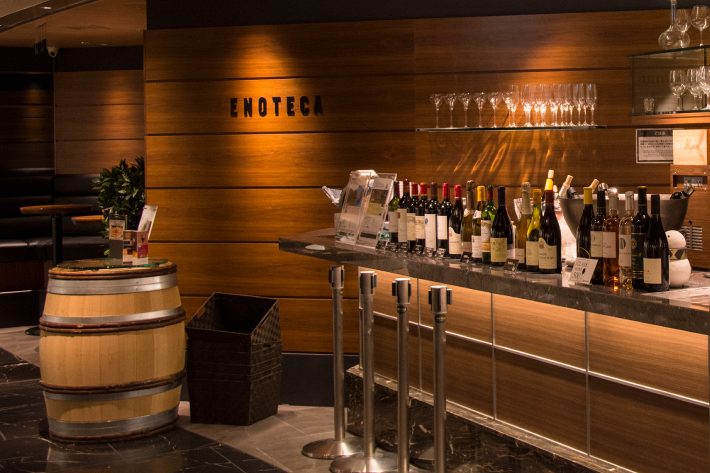

Next up is the Enoteca wine shop. Here you can try a rosé, touted as the Ginza Rosé, starting at 500 yen a glass. Sips of a dry refreshing rosé with a distinct nose of peach or lychee whet the appetite, and that, naturally, turns the page to the next chapter. We head to the Ginza Grand Premium Food Hall on the sixth floor.


Here you can plan a feast based on favorite dishes from several different restaurants, all located here elbow to elbow. I choose the terrace seating with a view down Chuo-dori avenue. Eating while gazing over the Ginza streetscape confers a sense of luxury and prominence, a sense of commanding the renowned district of Ginza.
For appetizers, from a bar produced by Chikara Yamada, I choose the Ceviche Classic (1,700 yen), Sea Urchin and Dashi Flan (800 yen), and Maguro Torotaku Avocado Espuma (500 yen).



From the sushi place, I order the Kyotofu Shichimi-Yakumi (600 yen).

From a Chinese restaurant, I go with Steamed Chicken and Peking Duck Bang Bang Chicken (950 yen) and Sichuan Mabo Hiyayakko (680 yen).


For drinks, I find that I want something for each occasion, and so I order white wine, sake, and barley shochu—perfection indeed.
The dishes come one after the other. Wow! All of this is indisputably fabulous! With the ceviche, mingling the seafood with the marinade placed under (nicknamed “milk of the tiger”) produces the robust acidic and spicy flavors, making one’s mouth water. With the flan, refined umami flavors and the intertwined sweetness of sea urchin and egg get the feast off to a propitious start. The proper and companionable beverage here is a white wine.
The Maguro Torotaku assumes a form I’ve never seen before. The richness of avocado, the fatty aroma of the tuna, and the texture of the takuwan (pickled daikon radish) all visit one’s palate. Remarkably enjoyable. For this and the kyotofu, which brings out a subtle sharpness in the marinade, the drink has to be sake.
The Bang Bang Chicken actually features Peking duck, creating unexpected textures. The Mabo Hiyayakko is an intriguing cold version of mabo dofu. It’s cold, so not greasy. Plus, the spiciness and sansho pepper aromas really stand out and stimulate the palate while stirring the nostrils and stomach. All of this is wonderful. And the barley shochu is perfect.
Just these six dishes have created quite the stir among our circle. Next up are several warm dishes. I go with the Black Vinegar and Balsamic Black Sesame Sweet-and-Sour Pork (1,480 yen), Lightly Broiled Kobujime Japanese Black Loin (1,800 yen), Deep-Fried Puffer Fish (1,800 yen), and Dashimaki Omelet and Ham Sandwich & Sausage Cocotte Plate (1,800 yen).




At this point, I order red wine, pairing it with the Sweet-and-Sour Pork and Japanese Black Loin. The red wine accentuates the pork, which itself adds a fruity balsamic aroma to the richness of black vinegar. The Japanese beef has a sweet, fatty aroma, which helps it go perfectly with white wine, too. We leave the sandwiches for later and drink the barley shochu with the sausages served alongside. It’s undeniably great fun to try the food brought out to you while looking for affinities with various drinks.
With the Deep-Fried Puffer Fish, we bite into an aromatic and crisp coating to part the flavorful flesh. But there’s a problem: only three pieces are provided. The situation calls for an impromptu rock-paper-scissors tournament to decide order and precedence. The individual placing fourth draws the short straw and misses out on the puffer fish. As an offset, that person gets first choice from the sushi plate I order to finish things off.
Our competition adds to the fun of ordering and experiencing all these different dishes. OK, now we’re to our final dishes. There’s the dashimaki omelet and ham sandwich—the rolled egg steeped in dashi stock with rich umami flavors is a bewitching sensation—plus the 12-piece sushi plate. I’ve also ordered shark fin noodles. We end our feast sharing this in the best of good spirits. The snow fungus on the shark fin noodles confers beauty benefits, so perhaps it’s best to leave this for the ladies in the group.



After all this food and drink, we find our tasting tour of Ginza Grand has left us full and a little tipsy—and with change left over from our per-head budget of 10,000 yen. This could well be habit-forming. But—wait—we’re not done! There’s still dessert.
We skip back down to the second belowground floor and head to PHILIPPE CONTICINI. The plan is to add a crowning glory to our outing with an original parfait freshly made at the counter-style sweets bar. I choose the Verinne Parfait (2,000 yen), composed of 18 ingredients, including rhubarb, strawberries, pistachio cream, and chocolate.


The many aromas, sour flavors, sweet tastes, and textures merge in exquisite harmony. But that’s not all. There is drama, as with a musical composition, from prelude to climax to coda. I’m intoxicated by visions embodied in and inspired by this parfait, which begin to mingle with the night’s GINZA SIX barhop, all of which began with a simple aperitif. My three companions fall silent and enthralled as we eat and enjoy a few moments of this evening.
All right, then; next time I’ll organize an afternoon barhop for the weekend.
Text:Macky Makimoto Photos:Takashi Kaizuka Edit:Yuka Okada
马凯尔牧元
1955年出生于东京。株式会社味的手帖董事编辑顾问、塔贝尔基斯特。从站着吃的荞麦面到割烹、法式到民族主义、苏菲茨到居酒屋,一年在外面吃饭600次,活跃在料理评论、纪行、杂志投稿、广播电视演出等丰富多彩的活动。《味之手帖》、《料理王国》、《食乐》等连载很多。锅奉行协会会长。著作有《东京食的礼法》(文艺春秋)、《出人头地酒馆》(集英社)等。


